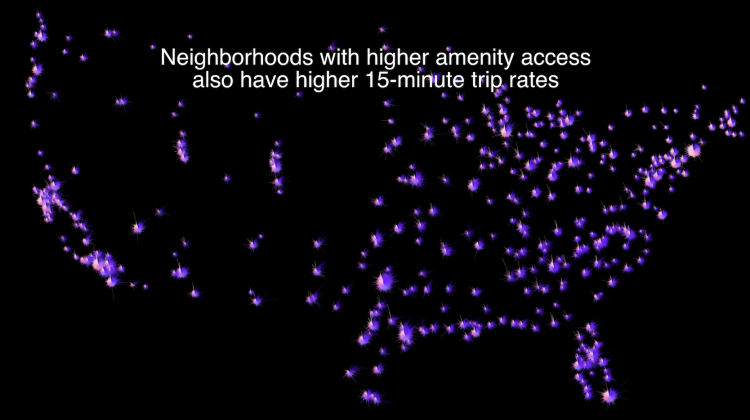Measuring Local Living

Intensifying urbanization of the global population, an estimated 68% of people in the world will live in cities by 2050, is a sustainability challenge during the era of climate change. Cities, and their residents, account for a disproportionate percentage of greenhouse gas emissions. If the number of urban residents are increasing while the world needs urgent action to reduce greenhouse gas emissions, what policy interventions might help increase urban sustainability?
The “15-minute city” is a concept that proposes clustering of amenities within walking distance of a person’s home, so that all urban residents can access their daily essentials through pedestrian mobility. Beyond the environmental advantages, proponents of the concept suggest that the design also builds local communities by centering economic activity within neighborhoods and increasing social connections. But how would cities interested in the concept translate an idea into reality?
“A model for defining and evaluating a 15-minute city lacks definitive indicators to allow researchers and policymakers to understand the relationship between amenity proximity and travel behavior,” says Arianna Salazar-Miranda (PhD ‘23, MCP ‘16). “A possible solution lies in the abundance of mobile device GPS data, which gives us insights into mobility patterns beyond traditional measurements such as survey data or spatial and temporarily fixed case studies.”
Salazar-Miranda and a team of researchers from the MIT Senseable City Lab, recently published a paper examining the use of GPS data to document and evaluate trip behavior in the US, with a particular focus on determining if the relationship between mixed-use, amenity rich urban areas is causal with increased local trips. Their findings, published in Nature Human Behavior, suggests a causal relationship as well as potential socio-economic challenges that proponents of a 15-minute city should incorporate into their advocacy.
Additional authors include: Timur Abbiasov, Cate Heine, Sadegh Sabouri, Paolo Santi, Carlo Ratti and Harvard’s Edward Glaeser.
Read their full paper, "The 15-Minute City Quantified Using Mobility Data"
Learn more about the research informing the paper


